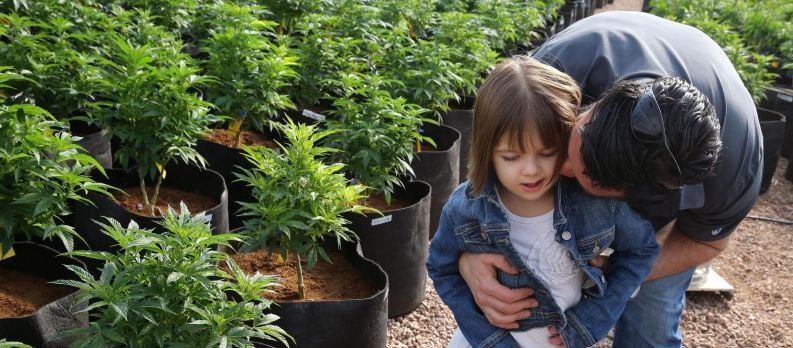
Cannabis use and medicinal use of cannabis has been an essential part of medicine for thousands of years, dating back to 2700 BC. Unfortunately, its use was wrongly prohibited in the 1930s and its medicinal use has been removed from modern medicine. Interest in medicinal cannabis was renewed in the 1990s with the discovery of the endocannabinoid system.
Since then, medicinal use of cannabis has been legalized in many countries worldwide with new studies about applications and effects coming out on a weekly basis. Number of conditions and illnesses that can be treated with cannabis is increasing and medicinal use of cannabis is starting to no longer be a taboo or considered controversial. But, some taboos still exists and one of the biggest is using medicinal cannabis on children and young people.
Using ‘lack of studies and trials’ as an excuse and ‘fearing’ the long-terms effects
Many doctors and medical professionals are not keen to prescribe cannabis to children, mostly due to lack of research, studies on long term effects or fear from possible side effects. But, waiting for studies and trials to be conducted is a luxury of time which a lot of people can’t afford. Often, cannabis is something that works when all other options have been exhausted and in many cases there is no real alternative. Recent study showed that “Adolescent cannabis users did not differ in adult brain structure.” and that “Adolescent cannabis use is not associated with lasting structural brain differences.” hopefully reassuring doctors to re-introduce cannabis in their practices.
Despite the fact that Cannabis has been used for thousands of years to treat conditions like epilepsy, rheumatism, tuberculosis, bronchitis, asthma and dozens of others and the facts it’s a well known analgesic, anticonvulsant, anesthetic, anti-inflammatory, antibiotic, anti-parasite, antispasmodic, appetite stimulant, diuretic and used for its many other properties, somehow the modern medicine doesn’t take into account its existence and medicinal use by practically every known culture and civilization. Prior to 1937, when use of cannabis was prohibited, there were at least 2000 different cannabis medicines, produced by over 280 manufacturers used in Western medical practices.
Jumping through hoops and changing the laws and regulations
While we’re waiting for the science to catch up and for researchers and doctors to be able to study cannabis without barriers and jumping through hoops, many people have started using cannabis for a variety of reasons, ranging from epilepsy to cancer. Most of them are forced to do it illegally, without proper help and guidance from the medical community and in many cases they are the ones driving legislation and regulations forward.
And while cannabis research and our knowledge of medicinal effects and properties of compounds found in cannabis, such as cannabinoids, terpenes and flavonoids, is increasing by the day, its real use is stagnant at best with very little shifts in its medical use that take forever to take place. Patients are often forced to seek information not from the doctors and medical professionals, like they do with any other type of medication, but on the internet, social media and various support groups, formed by patients and medical users themselves.
It’s always hard to see people suffering needlessly and it’s even harder when children and young people are involved. Some of their cases have changed laws, moved regulations and helped shape and change the cannabis industry from its core. Moving from the perception that the highest percentage of THC is what makes a cannabis strain good or medicinal, many of their cases have shown that every and each cannabis plant is indeed medicinal and that in some cases, THC – which is the most famous psychoactive compound found in cannabis, is not always needed to get the desired medicinal effects, introducing other cannabinoids and compounds – such as CBD into the mainstream medicine.
Charlotte Figi
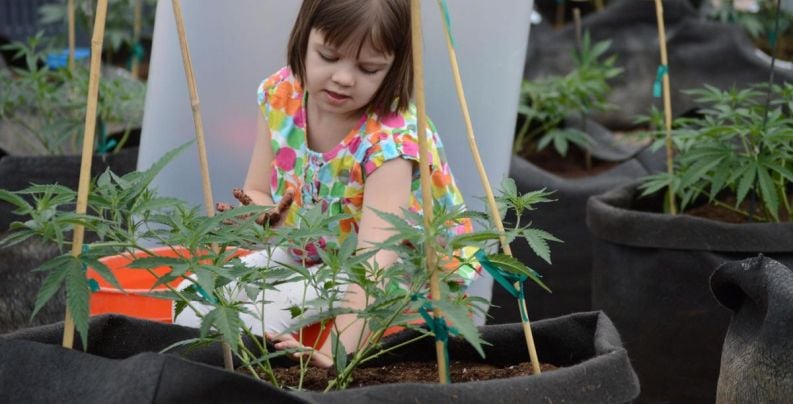
[Photo Credits: Nicole Montanet, The Gazzette https://gazette.com/health/medicinal-marijuana-stops-seizures-brings-hope-to-a-little-girl/article_520b074e-5c46-5d75-af95-bdd060f4a8b9.html ]
Charlotte’s case is the one that started the ‘CBD revolution’, introducing high CBD and CBD enriched strains into commercial cannabis grows and medicinal use. Charlotte began having seizures when she was only 3 months old and they were getting worse by the day. Her parents took her to see every possible doctor and specialist but they weren’t able to find what’s wrong with her, only to be diagnosed with Dravet Syndrome a year and a half later.
Dravet Syndrome is a rare and severe form of intractable epilepsy, meaning it can’t be controlled by medication yet he was put on seven different medication – including barbiturates and benzodiazepines, which worked for a while, but the seizures always came back. She continued to suffer and her parents tried every possible treatment even being suggested an experimental anti-seizure medicine being used on dogs at one point.
Overcoming obstacles and finding the cure
With her health and development declining, at age 6, she was having 300 grand mal seizures a week and had lost the ability to walk, talk and eat even had her heart stop a number of times. It was at this point that her father found a case of another child with Dravet Syndrome being treated by cannabis oil which was high in CBD and low in THC. With her state of Colorado legalizing cannabis for medicinal use it was now possible to try treating Charlotte with cannabis but it wasn’t easy finding doctors willing to prescribe cannabis to such a young child. Luckily they were finally able to find doctors willing to prescribe cannabis and she became the youngest applicant in Colorado at age 5.
Another obstacle they had to overcome was finding a cannabis strain with higher levels of CBD, which at the time, wasn’t widely available but their parents managed to find some at the local dispensary and made the first oil. Charlotte’s seizures stopped for seven whole days and everyone was more than happy but shocked by the fact that a simple oil made from cannabis plant could do such a thing.
Getting a hold on the next batch of cannabis to make the oil from was again very difficult and at this point Charlotte’s parents found out about Stanley brothers who were among the largest cannabis growers and dispensary owners that have been crossbreeding high CBD strains and decided to seek help from them. From their collaboration a high CBD strain called Charlotte’s Web was born and it became the source for much needed medication for many epilepsy patients to date.
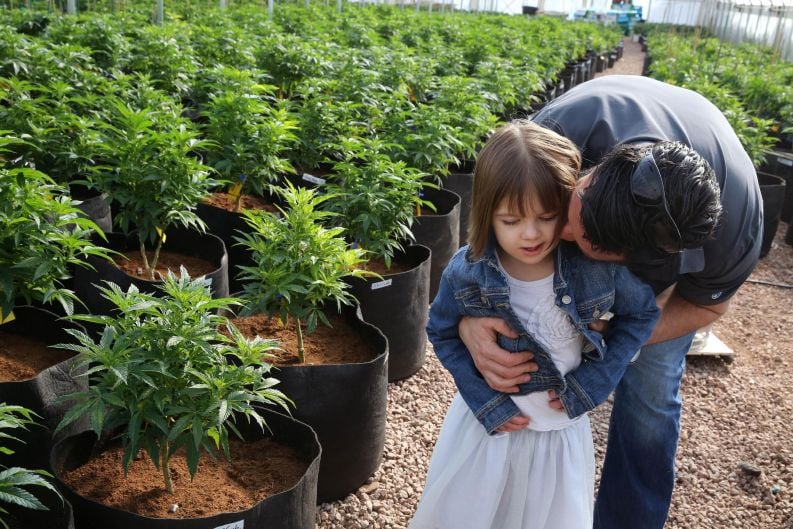
[Photo Credits: Brennan Linsley—AP ]
With medical supervision, Charlotte began to take cannabis oil 2-3 times a day with three to four milligrams per pound and that stopped her seizures when all other medication couldn’t. Today, 13 years old, Charlotte is thriving. Her seizures only happen 2-3 times per month, almost solely in her sleep and she is walking, talking and feeding herself, something nobody could even dream of when she wasn’t using cannabis.
Media coverage and introduction of new legislature
Charlotte’s case was covered in the 2013 CNN documentary called “Weed” which featured several medical cannabis patients, showing the process they must endure to get a prescription and use cannabis medicinally. The documentary itself was quite controversial and it led to a different perspective when it comes to use of cannabis, even changing the mind of Dr. Sanjay Gupta, a well known opponent of cannabis use and its medicinal properties at the time.
With extended media coverage and more and more cases of children and adults using cannabis as medicine, growers and cannabis producers started to grow and breed more and more cannabis strains high in CBD and with different CBD:THC ratios. Today, there almost isn’t a seed bank or dispensary which isn’t offering CBD strains and products. CBD usage has also sparked a new Hemp renaissance, allowing for CBD to be extracted from hemp plants rather than weed, which allowed for easier and cheaper way of getting the medicine, even without cannabis being fully legalized. And although CBD is great medicine, the lack of regulation and lack of dependable studies is still a huge problem. Finding the right way to medicate and ensuring that CBD products are indeed medicine still needs some figuring out.
On March 20th 2015, the “Charlotte’s Web measure” was passed by the Florida House of Representatives Budget Committee, allowing the patients to treat their kids with low THC cannabis without the fear of being persecuted. This was followed by another bill called “Charlotte’s Web” law which allowed for easier growing of the strain as well as provided funding for further research into the medicinal properties of CBD.
Ava Twomey
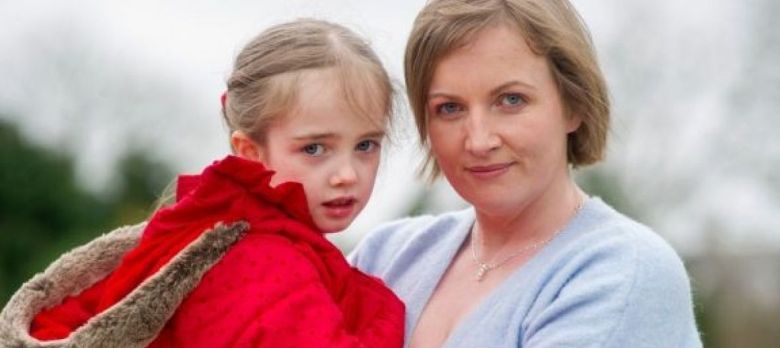
[Photo credits: Irish Times / https://www.facebook.com/ForAvaHerStory/ ]
Just like Charlotte, Ava was diagnosed with Dravet Syndrome and was suffering with more than a dozen seizures a day, without standard medication being able to help her with her condition. In more ways than one, her story is very similar like Charlotte’s – starting with having to fight the government for her right to use cannabis as medication, going through numerous drugs and products to find the one that’s actually working and finishing with her being free from pharmaceuticals and her seizures under control.
Exhausting all possible treatments and becoming medical cannabis refugees
Her condition caused her to go into cardiac arrest and even into an eight day coma, she was unable to go to school, play with her friends and live a normal life with trips to the hospital on a weekly basis. Standard medication didn’t work – they tried 11 different drugs and all sorts of therapies – cranial sacral therapy, massage therapy, occupational therapy, equine therapy and others but neither of them worked. The problems didn’t stop there – after trying everything other than cannabis, they were unable to find a consultant from Ireland to prescribe cannabis which led them to Holland.
The family even became medical cannabis refugees, moved to Haag and rented an apartment there so Ava could get proper treatment and with cannabis oil administered three times a day her seizures went away. They found themselves in a difficult situation of having the medicine that works but that medicine was still illegal in Ireland, so their parents started to campaign for the legalization of medicinal cannabis and fought the government to allow Ava and other patients the cure they desperately needed.
Campainging and challenging the laws
There isn’t a thing a parent wouldn’t do for their children and the lengths that Ava’s family went through to get her medicine are truly remarkable. Her mother Vera Twomey spoke in the House of Commons in London, walked 260km from Cork to Dublin in order to increase the interest of the government to her case, gave interviews to media outlets trying to mobilize and educate people and campaigned in every other possible way to be allowed to treat her daughter with cannabis. This resulted in government giving Ava a special licence allowing her daughter to gain access to medicinal cannabis treatments in November of 2017, after two and a half years of campaigning.
Things didn’t go without problems and there were numerous cases where oil, shipped from Holland, was held up at customs and similar incidents. Vera Twomey didn’t stop there and she continued to fight for the legalization of medical cannabis which resulted in government allowing for CBD products to be legal in Ireland in 2019. Although the CBD alone doesn’t help Ava and she still needed to get her medicine from Holland, it was a huge win for cannabis activists and medical users in Ireland, largely done because of the efforts Ava’s family put in. But, CBD alone doesn’t help everyone, Ava included, and full legalization should follow, allowing people to treat their conditions and illnesses with cannabis that includes all the medicinal compounds found in the plant.
For Ava
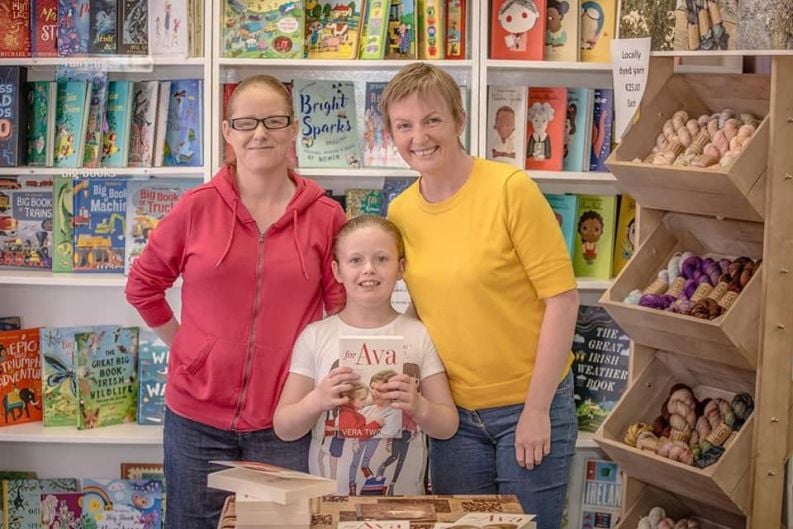
[Photo credits:https://www.facebook.com/ForAvaHerStory/ Text: Ava and Vera Twomney at a book signing event ]
Vera also wrote a book called “For Ava” telling her story about the whole thing, hoping to help others who may find themselves in similar situations and to pay tribute in some way, to the people who helped them achieve their goal. It’s a moving story about the lengths a parent will go to for their child’s health and happiness. Vera’s efforts got recognized by many and she won the Rehab People of the Year Award in 2018. The acceptance speech she gave was given standing ovation and left many of the audience crying but it was later censored and wasn’t shown in full in most TV programs and shows, excluding the part in which Vera criticized the government for not fully legalizing cannabis and the way it’s treating her citizens.
Ava has recovered well and is doing great, being free from all pharmaceuticals and taking cannabis oil twice a day. She still gets the medication needed from Holland but is concentrating on things a young child should be concentrating – going to school, playing with friends and just living a healthy and carefree life and enjoying being a normal kid.
Billy Caldwell
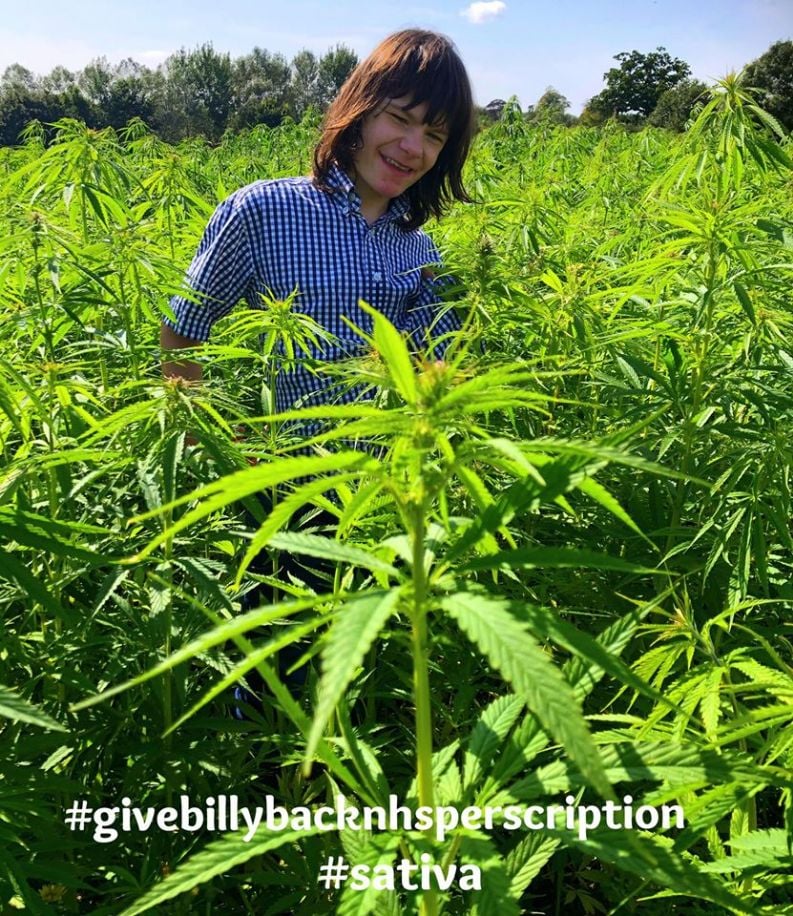
[Photo Credits: https://www.facebook.com/keepbillyalive1/ ]
Billy’s case is unfortunately very similar to the previous two, he too suffers from a form of epilepsy that can’t be controlled with standard medicine causing him to have hundreds of seizures a year. After exhausting all available options and struggling to find appropriate treatment he was forced to seek treatment out of his home country and his fight too contributed to significant actions and changes to cannabis laws and regulations.
Billy, then 11 years old, went to the US to be examined and treated by specialists that even explored the option to operate on his brain. After spending five months under specialist’s care, Doughlas Nordli, director of paediatric neurology at the Children’s Hospital Los Angeles, gave Billy cannabis based medicine that immediately started to show results. Billy’s mother Charlotte Caldwell said that the results were ‘incredible’ and asked her GP in Northern Ireland to prescribe it to her son, once they returned home.
The first child to be prescribed cannabis on NHS
In 2017, Billy became the first child to be prescribed cannabis oil on NHS but finding a doctor who was willing to prescribe cannabis based medicine to anyone, yet alone a child, in the UK was of course very difficult. Strict regulation and guidelines allowed just a small number of patients to get a licence, forcing many to seek alternative in private clinics. But, after a while the search resulted in success and specialist consultant from England was willing to prescribe Billy his much needed medicine. His seizures started to get under control and he was reportedly 300 days seizure free.
With repeated round trips from her home town Castlederg, the costs were beginning to pile up and Billy’s family tried to find an alternative solution. And they thought they found it with their local GP who was willing to prescribe it under the direction of specialists from England. Being a common practice in other areas of medicine known as ‘shared care arrangement’, he prescribed Billy his medication until The Home Office ordered the doctor to stop prescribing it, as their interpretation of the law was that GPs can’t prescribe cannabis in such way and that it was ‘unlawful possession of Schedule 1 drugs’.
Billy was once again been left without a way to get his life changing and much needed cannabis medication so his family did what every parent would do for his child – they seeked helped elsewhere. Charlotte Caldwell traveled will Billy to Canada where he got six months supply of medicine – two different cannabis oils, one being full plant extract CBD oil and other containing tetrahydrocannabinolic acid or THCA, which is strictly illegal in the UK due to its association with the psychoactive effects of cannabis – although THCA itself is not psychoactive.
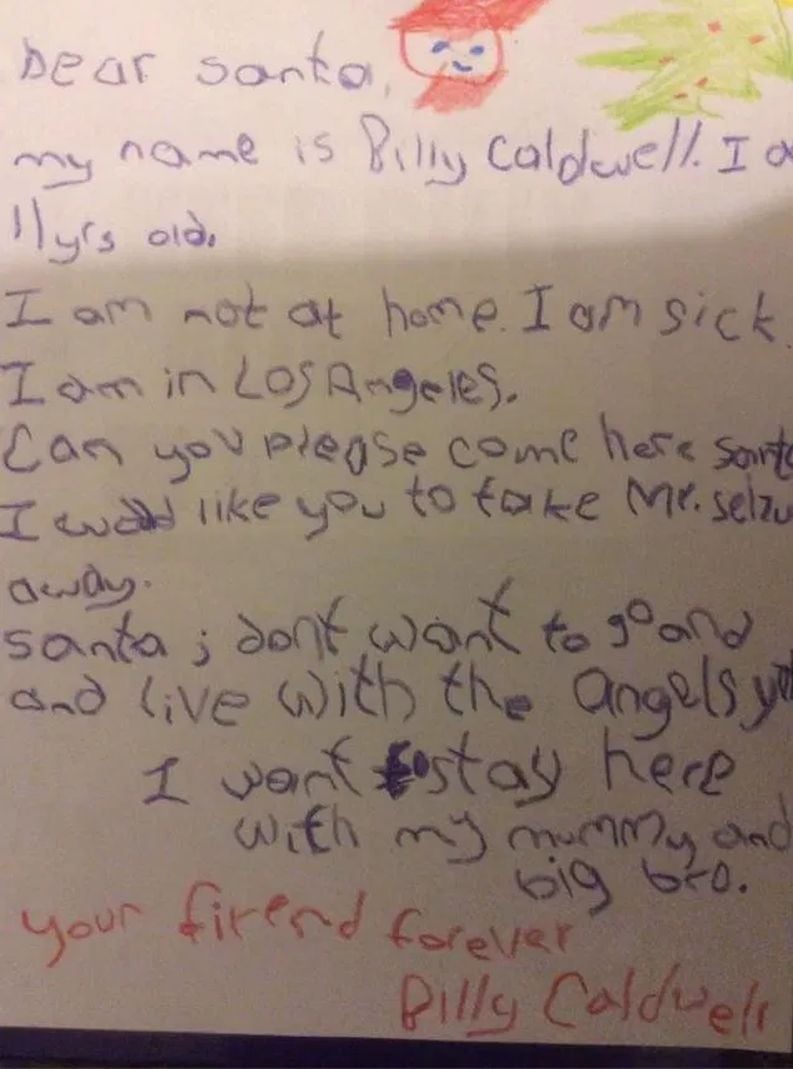
[Photo Credits: https://www.facebook.com/keepbillyalive1/ Text: Billy’s letter to Santa Claus, asking him to take his seizures ]
Challenging and changing the cannabis laws
After returning to the UK, Billy’s medicine was seized by border guards at UK Customs. Left without medication once again, his health started to deteriorate, seizures came back and Billy ended up in a hospital. The Home Office recommended three neurologists who could help Billy’s ‘transition off cannabis oil’, but none of them subsequently saw him. Charlotte Caldwell said one of the experts told her they did not have the time, another was on holiday and the third did not return her calls.
With no way left to treat him with standard medication and with no way of getting the cannabis medicine that worked, Billy’s condition went from bad to worse which resulted in Home Secretary Sajid Javid interweening and granting Billy an emergency exemption licence and having his medication returned. With cannabis oils administered, his condition improved and his was soon discharged from the hospital.
The Caldwells then lodged papers at the High Court in Belfast to contest the Health and Social Care Northern Ireland’s (HSCNI) decision to block GPs from prescribing the drug. Billy’s story was one of key cases which helped to review and change medicinal cannabis laws, resulting in medicinal cannabis becoming legal in the UK.
There should be no taboos when it comes to (cannabis) medicine
There are about 20,000 children with epilepsy who do not respond to the standard medication prescribed by the NHS and 600,000 people suffering from epilepsy in the UK alone and 65 million worldwide. Although, still with many flaws in rules and regulations and with very limited availability, cannabis medicine is becoming a recognized and valuable cure for more and more conditions once again. The biggest issue patients in the UK and the rest of the world face is lack of education and most importantly practice that doctors and medical professionals have when it comes to cannabis.
Being taught for generations that it’s a dangerous, mind numbing drug with no medical benefits, which still reflects on its legal status (Schedule 1), seriously limited the potential and ability for research and use in modern medicine. Current position NHS has on prescribing cannabis based medication to treat epilepsy is that “long-term effects are unknown” and they confirmed that no paediatric neurologist in the NHS is willing to prescribe it.
Learning from the past
It’s a shame that medical professionals don’t take into account thousands of years when cannabis was not only used but was an essential part of medicine. Treating epilepsy with cannabis and full plant cannabis extracts is a very old and very well documented and one of the best known medicinal use of cannabis. According to some sources, using cannabis to treat epilepsy dates back to ancient Assyrians, continuing in Ayurvedic practices in India and Arabic medicine throughout history.
Study named “Cannabinoids and Epilepsy” published in 2015 states “For over a millennium, pre-clinical and clinical evidence have shown that cannabinoids such as CBD can be used to reduce seizures effectively, particularly in patients with treatment-resistant epilepsy.”
Physicians during the Victorian era were using cannabis extracts to treat people for many various illnesses, including tinctures for treating children with epilepsy. In fact, the man credited with introducing cannabis to Western medicine is Dr William Brooke O’Shaughnessy MD is an Irish physician, surgeon, Professor of chemistry, scientist, innovator and a pioneer of intravenous therapy.
After graduating in 1829 with a Medical Doctorate from the University of Edinburgh, his early work led to the development of intravenous fluid and electrolyte replacement therapy. He then moved to India where he developed new cannabiniod extraction techniques which he used in preparations to treat cholera, tetanus, analgesia, rheumatism and epilepsy in infants.

In his paper “On the preparations of the Indian hemp, or Gunjah”, O’Shaughnessey relates the case of a baby just over a month old who he administered an ethanol cannabis-based tincture. He stated in his paper “Of all powerful narcotics it is the safest to use with boldness and decision”.
So, let us hope that we can learn from and embrace the complicated history of this remarkable plant and use it once again in brighter and healthier future.
We love to hear your thoughts in the comments section below.
Maybe you would like to check out the range of medical cannabis seeds available at The Vault Cannabis Seeds store?
Newsletter Sign Up
Make sure you never miss another Vault promo – sign up for our newsletter at http://goo.gl/Bt2Ba2
Remember: It is illegal to germinate cannabis seeds in many countries and some remote, less enlightened planets outside the core systems. It is our duty to inform you of this fact and to urge you to obey all of your local laws to the letter. The Vault only ever sells or sends out seeds for souvenir, collection or novelty purposes.


This Cannabis Medicine: Treating Kids With Epilepsy
site has helped me many times in health problems. This book helped
me to heal and feel better